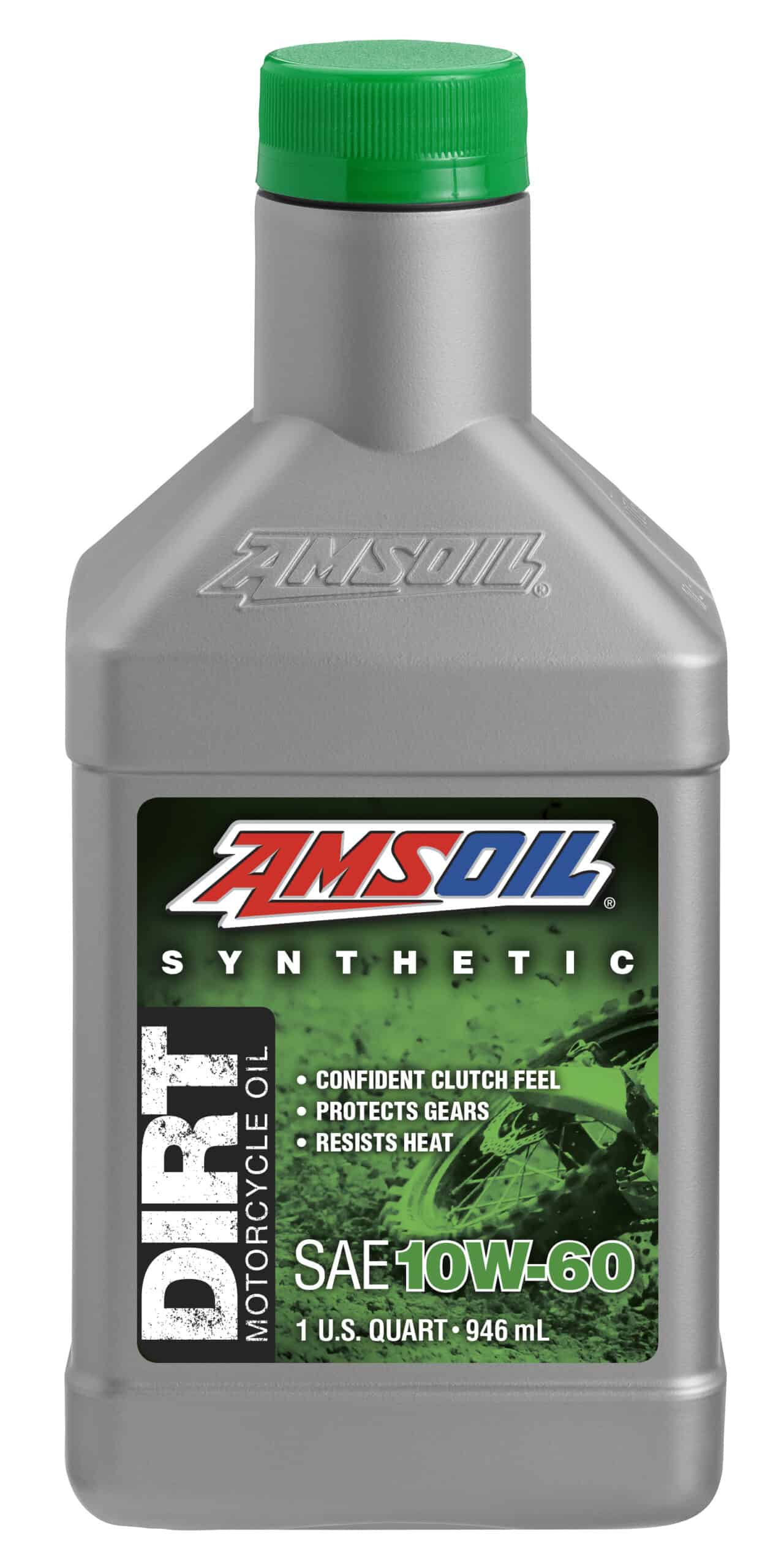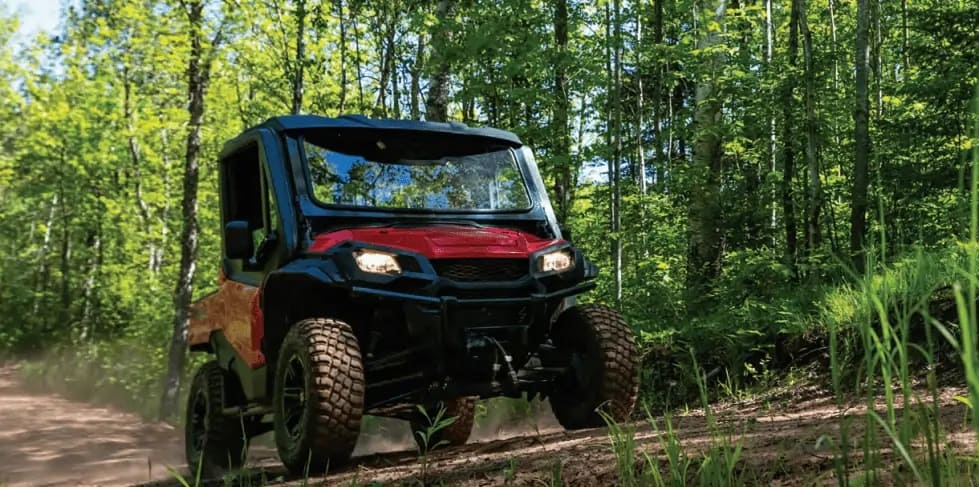Dirt Bike Tire Replacement
Welcome to Tech tips! I'm Len Groom and today, we will explain "Dirt Bike Tire Replacement: How to Change the Tire on a Dirt Bike.
We're talking about something that can be intimidating and that's changing a tire on a dirt bike but with a few tools and some know-how. It isn't so bad, check this out!
So once the tire is off the motorcycle, you're going to want to prop it up.
In this case we're using a bucket. The first thing you need to do is let the air out of the tire, so use a core removing tool and pull the valve core out. You'll want to remove the dust seal because eventually we will be removing the tube from the tire.
Make sure that you loosen the rim lock - this needs to be loose in order to get the tire off. You can verify by pushing in on it that it is loose.
A little bit of soapy water goes a long way in this project, and you want to use some soapy water as a lubricant around the edge of that tire
Now we talked about tools. You want to use your tire spoon to get that tire off the bead. You can see we're pressing down on the edge of the tire. To break that bead free from the rim, use the tire spoons to help along the way.
Use your hands, push down around the outside of the tire, and that will unseat the bead. Now you need to flip the tire over, and we need to do the same thing on the other side. So once again, go ahead and use some lube. Spray it on the edge and then use your tire spoon to press in between the tire and the rim to force the tire off the bead.
Okay, we usually start at the rim lock. You're going to want to put your tire spoon underneath the tire on the rim, being careful not to pinch the tube. The big fear here is pinching the tube, and tire spoons help to not do that. So you want a good set of tire spoons for this project.
Start working the tire around the rim with the tire spoon. As you can see, we're holding in one spot. Once you get it about three quarters of the way, it'll start to come a little bit easier. As you can see, we're not struggling here.
Now we've got half the tire off the rim. As I mentioned earlier, we're going to have to reach in there and pull the tube out. So remove the tube carefully, and once you get to the valve stem, you'll have to push the valve stem back inside the rim and remove the tube.
Now we still need to get the tire off the rest of the rim. We still have one bead that's on the rim so you could see we'll add some soapy water as lube. We'll put the tire spoon in behind and we'll get it started now.
Here's a trick, if you've got a plastic hammer, you go ahead and hit that bead carefully. You don't want to bend the rim. Here, you want to work your way right around there. As you can see, this helps to push that tire off the rim. Once you get it about halfway, you can see it starts to come off very easily - pull the rim free.
Now we can change our tire. The first thing you want to do is use plenty of lubricant as I mentioned earlier - just soapy water works very well. Set the tire back on the rim. We're pretty much going to reverse our process. You take a look at that little yellow dot on the rim? You want to line that up with your rim lock. This is very important for balancing the tire.
Get the tire started as best you can. Kind of push it around - you can see how we're working it around. Use your tire spoon to push the tire on the rim the rest of the way.
This is the part that everybody can do pretty easily, there's no tube to pinch here so you can pretty work your way around there fairly easily.
We'll reinstall the valve core into the tube. And now we're going to reinstall the tube into the tire. This could be interesting but you just want to take your time - make sure that it goes in unwrinkled - you don't want to force it in there and have it twisted or anything like that. Push it in there very carefully, get the valve stem through the rim, and you can see here we're going to use a nut to hold the valve stem through the rim.
Some bikes won't have this nut on there, it's just good to have one around. We'll talk a little bit more about that as we finish this job. You can finish putting the tube into the tire and then we need to move the tire back and forth a little bit. We want to be sure that yellow dot is lined up with our rim lock, but at the same time we want to make sure that the valve stem is straight. You can see how it's angled and we're shifting the tire back and forth to get that valve stem as straight as we can. That means that there won't be any weird pressure or twisting on that tube.
Remember, we're going to inflate that tube inside the tire. Use plenty of soapy water around the outside of the rim.

Buy AMSOIL Dirt Bike Oil Products
This is where people get themselves into trouble. The tire spoons are critical here so you start at the rim lock. Make sure that the tube isn't pinched in the tire spoon and the rim. Use your knee if you need to.
Now you're going to work that tire right around the rim. Now it'll go easy until about the halfway point and then it starts to get difficult, and this is where you need to be very careful that you're not pinching that tube. So every bite you take with that tire spoon, be sure you don't have tube pinched in there.
As you can see, this is where the struggle begins that last little bit. Once you get it to that part right there, if you can't force it over with your hand, a good trick here is to go ahead and use the hammer that ensures that we're not going to pinch the rim, and it gets that last little piece of tire on there - we won't have a pinch tube if we do this.
At this point you want to add just a little bit of air to the tube, check your bead all the way around on both sides to be sure that there isn't any tube sticking through and everything is aligned properly. We want to make sure there isn't bubbles or air or something coming out of there.
Now one other critical thing is to be sure that the tube is in the tire properly, so what we're going to do here is we're going to remove the valve core, let the air out of the tube once again.
You can see how that valve stem wants to retract back in that'll let us know that it's empty. We're going to make sure that it's free. Push back and forth on it - that tells us that it isn't pinched. We're going to press on that rim lock just a little bit to be sure that there's two behind it.
You wouldn't want to pinch the tube behind the rim lock.
Once we're satisfied that nothing is pinched, we can go ahead and put the valve core back in and we can add some air to the tire.
Now if you see a couple bubbles come out here, don't panic - that's just a little bit of the soapy water, that's not a problem, that's normal.
Once again, check the bead on both sides, check your tire pressure, you're going to want to look in your bike owner's manual for your tire pressure or check on the side of the tire. You're going to remove the nut. Since in this is case this rim and this tube combination did not use a nut, we were only using that dust seal and that dust seal is critical that keeps dirt and water from getting inside the tire.
You're going to put your valve cap back on. You're going to tighten your rim lock down. This rim lock ensures that the tire stays on the rim in the event of a flat.
And you're done!
So there you have it - not so intimidating after all. Thanks for watching the video on dirt bike tire replacement: how to change the tire on a dirt bike.
We'll see you next time!
Become An AMSOIL Preferred Customer
Add a six-month or one-year Preferred Customer membership to your cart and save up to 25% on today’s order.
We welcome your comments, questions and suggestions. Please contact us.
We do invite you to engage with us on social media (just not for immediate needs). Best to call, email or visit our site for the best response.
As always, if you like, you will find us on the following social media sites, among many others:
Facebook
LinkedIn
Twitter


